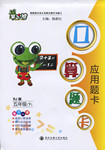题目内容
.
第三部分:阅读理解(共20小题,每小题2分;共40分)
阅读下面短文,掌握其大意,然后从各题的A、B、C、D四个选项中,选出最佳选项,并在答题卡上将该项涂黑。
Several interesting American museums tell about health subjects. One is the Doctor Samuel D. Harris National Museum of Dentistry. It is at the University of Maryland in Baltimore. That is where the first college in the world to train dentists began. The museum tells about the history of the medical treatment of teeth. Visitors can see some frightening devices that once were used to remove infected teeth. They also can see sets of teeth made of animal bone. They were made for a famous American —— the first President, George Washington.
Most people do not consider a visit to the dentist their idea of a good time. However, the director of the museum says he wants to make the museum a funny place to visit. He says he also wants to teach visitors about the importance of taking care of their teeth.
Another museum collects devices that help people hear. The Kenneth W. Berger Hearing Aid Museum is at Kent State University in Kent, Ohio. The museum has more than three-thousand hearing aids from around the world. They include old and strange devices. Some hearing aids were made to look like other objects. That is because in the past many people did not want anyone to know they were wearing a hearing aid.
56. It is common for people to think it uneasy to pay a visit to ____.
A. the University of Maryland B. the Museum of Dentistry
C. the Hearing Aid Museum D. the dentist
57. The text mainly tells about _____.
A. museums in the US B. interesting American museums
C. American museums with health subjects
D. the history of the medical treatment of teeth
58. What do we learn about George Washington from the text?
A. He once visited the National Museum of Dentistry.
B. He considered the Museum of Dentistry a fun place to visit
C. His artificial (人造的) teeth were collected in the National Museum of Dentistry.
D. His teeth seemed to be made of animal bone.
59. The underlined word “devices” in the first and last paragraph probably means _____.
A. ways B. strategies C. tools D. desires
56-59 DCCC

 开心蛙口算题卡系列答案
开心蛙口算题卡系列答案 The Kindle is coming! The Kindle is coming!
The Kindle is coming! The Kindle is coming!